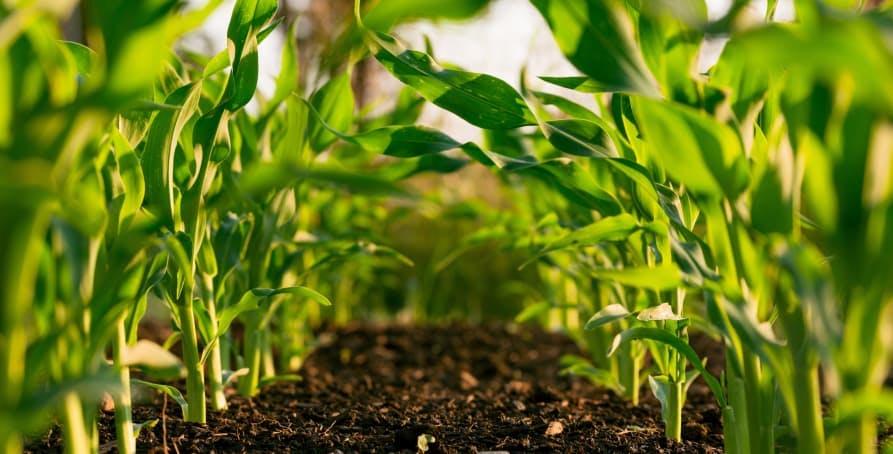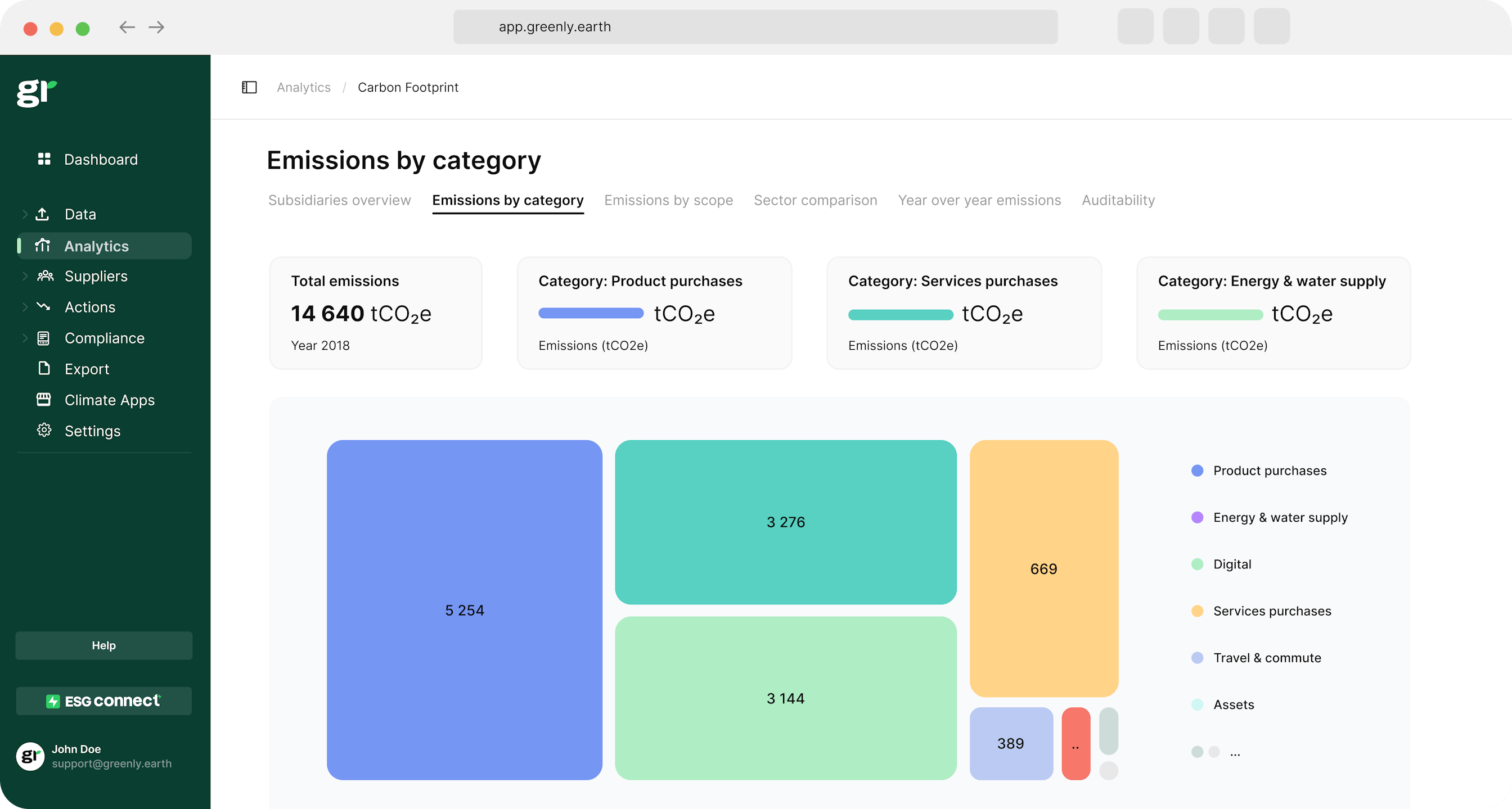ESG / CSR
Industries
The Principles of Agroecology



When we think of sustainable ways to improve our quality of life in the midst of climate change or to benefit the planet itself, we tend to think about the impact we create with material items such as clothing or technology – making our food consumption and agroecology lower on the list.
Agroecology is an approach to farming that aims to include both environmental and social aspects into the process of food production – with a goal to build greater resilience, efficiency and overall sustainability.
In this article, we’ll explain what agroecology is, the 13 principles of agroecology, how it impacts economic viability, the downsides to agroecology, and if agroecology is beneficial in the fight against climate change.
What is agroecology?
Agroecology is a scientific method of farming which aims to incorporate ecological, social and economic factors into the production of food and how it is consumed.
This is ultimately beneficial for both the consumer as well as farmers, seeing as more sustainable food production and consumption is healthier for people and can also help to boost farmer’s productivity and sales.
💡Did you know? Agroecology was first introduced prior to World War II in 1928 when the term was first published by Basil Bensin, and was then used by zoologists in the 1930s. Since then, agroecology has continued to grow and evolve.
In order to be as effective for food and farming systems as possible, agroecology makes use of science and various ecological theories to propose, develop, and test various methods that may be used in agricultural systems. This type of extensive research often requires studying biology, socioeconomic factors, as well as the available and most relevant technologies that can be used for ecosystem services and a the potential farming system in the proposed plan.
Some of the main values of agroecology include:
- Promoting diversity to facilitate food security and preservation;
- Collaborating in order to solve agricultural dilemmas with more ease as a result of combining resources and ideas;
- Improving the efficiency of agricultural systems and farming practices to evade using external resources;
- Transforming food systems to utilise ecological principles and to minimise the loss of natural resources in a traditional agricultural system or agricultural practice;
- Encouraging better recycling practices to mitigate the man-made concept of waste;
- Building greater resilience amongst ecosystems and communities, as more diverse agricultural systems can help regions recover faster after a natural disaster.
👉 Ultimately, agroecology can serve as a way for farmers to develop a more productive and fair-minded food system – seeing as it will rely on a more holistic approach as opposed to using chemicals or unnatural substances to encourage food production.

What are the 13 principles of agroecology?
There are 13 main principles of agroecology: including participation, land and resources governance, connectivity, social values, economic diversification, and biodiversity.
13 Principles to Follow for Sustainable Agriculture & Food Production
Here are the 13 main principles of agroecology broken down:
- Participation – Aimed at encouraging others to get involved, this principle of agroecology supports food producers to give their input on how agricultural and food systems are currently managed.
- Land & Resources Governance – This principle of agroecology is focused on protecting family farmers and sustainable managers who seek to preserve natural resources found in specific regions.
- Connectivity – As an effort to facilitate the relationship and trust between producers and consumers, this framework of agroecology works to rectify distribution networks by re-instilling food systems back into their respective, local economies.
- Co-Creation of Knowledge – Two heads is always better than one. This principle of agroecology encourages participants to share their knowledge regarding farming tactics or scientific discoveries for the collective benefit.
- Social Values & Diets – Intrinsic motivation is essential to achieving any goal with success in the long-run. Therefore, it’s important to create food systems that work simultaneously with the region's traditions and societal norms while still preparing a wide-variety of healthy and culturally conducive foods.
- Fairness – Sustainability is often aligned with justice one way or another. This principle of agroecology aims to support anyone who contributes to modifying the current food system under agroecology.
- Economic Diversification – It’s important for all actors in agroecology to be rewarded for their efforts. This principle allows small farmers to gain financial independence in order to implement the other principles of agroecology more efficiently and effectively.
- Biodiversity – Seeking to maintain a wide variety of species, both plants and animals, can help to improve sustainable food production.
- Animal Health – All animals should be safeguarded throughout the process of implementing other principles of agroecology.
- Soil Health – Healthy soil is vital for optimized food production and plant growth, meaning without prioritizing this principle of agroecology – the rest would be more difficult to achieve.
- Synergies – In order for agroecology to prove worthwhile, it is imperative to create an atmosphere where all plants, animals, trees, water, and soil are working in conjunction with one another.
- Recycling – Under agroecological practices, it’s always best to use renewable resources to prevent excessive waste production.
- Input Reduction – Farmers or other actors in rectifying food production systems should make an effort to reduce their dependence on inputs, such as materials purchased from suppliers or hiring additional workers for labor.
Additional Values in Agricultural Practices & Agricultural Production Systems
In addition to the 13 principles of agroecology, this scientific approach to food development also operates on these main elements:
- Human & Social Value – It is important for the interactions between plants animals to not hinder social and gender equity or impact rural communities.
- Responsible Governance – Ecological and social concepts should be employed when seeking to achieve improved food sovereignty.
- Culture & Food Traditions – Sustainable farming and organic agriculture should seek to employ traditional knowledge of farming and ecological concepts in addition to not interfering with cultural traditions.
- Circular Economy – Unsustainable agricultural systems doesn't encourage the use of local renewable resources, but agroecology contributes to a circular economy – helping to prohibit waste and improve design and management for cropping systems.
- Diversity – Modern agriculture should utilize various resources such as organic matter and deliver contextualized solutions for agricultural crops.
- Resilience – Agroecology should help the entire food system to build greater financial independence and resilience against natural disasters such as a hurricane or wildfires.
- Regulation – Improved methods for sustainable agroecosystems and agricultural organization should be employed – such as organic practices and implementing the use of knowledge systems and social sciences to ensure utmost regulatory practices are in order.
- Efficiency – Seeking to use the most effective resources such as soil organic matter or another sustainable alternative to avoid intensive agriculture and improve agriculture organization can help to not only provide more nutritious food, but a more effective approach to managing organic matter.
👉 Agroecology was developed as an effort to instill a more well-rounded approach to food production – one that doesn’t prioritize profit or productivity over the health and well-being over society or the environment, but does not forsake economic viability either.
Elements of Agroecology and Food Production
| Element | Description |
|---|---|
| Human & Social Value | Agroecology emphasizes improving the livelihoods and well-being of farmers, workers, and communities involved in food production. It seeks to create fair labor conditions, equitable access to resources, and social equity. |
| Responsible Governance | Involves participatory decision-making processes, transparency, and accountability in managing food systems. It ensures that policies support sustainable practices and benefit all stakeholders, including marginalized groups. |
| Culture & Food Traditions | Agroecology values and incorporates local and indigenous knowledge, cultural practices, and food traditions. It promotes biodiversity by preserving traditional crops and foodways that are adapted to local environments. |
| Circular Economy | Focuses on closing nutrient and energy loops through recycling, composting, and reusing agricultural by-products. This reduces waste, enhances resource efficiency, and supports sustainable production systems. |
| Diversity | Diversity in agroecology includes crop and livestock diversity, genetic diversity, and ecosystem diversity. It enhances resilience, reduces risks, and contributes to sustainable and productive food systems. |
| Resilience | Agroecology builds resilient food systems capable of withstanding and recovering from climate change, economic shocks, and other disturbances. It includes practices that enhance soil health, water management, and biodiversity. |
| Regulation | Ensures that agroecological practices comply with environmental, health, and safety standards. Effective regulation supports sustainable agriculture by enforcing rules that protect natural resources and public health. |
| Efficiency | Efficiency in agroecology means optimizing resource use to maximize productivity while minimizing environmental impact. It includes practices like precision farming, efficient water use, and integrated pest management. |

How does agroecology impact the economic viability of farms?
Alternative agriculture such as agroecology affects the economic viability of farms seeing as it seeks to reduce the dependency on external inputs, which in turn should make food producers more financially independent and more lucrative in the long-run.
Farming systems that aim to implement agricultural production systems and sustainable agriculture methods such as agroecology are bound to not only benefit from improved ecological processes, but also to help support local communities and build more sustainable food systems.
What can farmers do to benefit financially from agroecology?
Some practices that farmers could implement to ensure agroecology benefits them financially include implementing diversity, mitigating the use of chemical fertilizers which harm soil and contribute to air pollution, improving overall pest control, or implementing any of the other 13 main principles of agroecology.
👉 Overall, agroecology can help reduce operational expenses and allow farmers or food producers to reap the benefits of a more stable income – something becoming more important in the midst of climate change, as extreme temperatures and natural disasters continue to have an effect on agriculture.

Why are the downsides to agroecology?
Although agroecology could pave the way for future, more sustainable food production practices, many critique agroecology due to some of its downsides – which include how new the field of study is and an overall lack of consistency.
What is the main issue with agroecology?
In addition to this, one of the main problems many have with agroecology is that it doesn’t follow a set rulebook. In other words, some claim that a major flaw of the principles of agroecology is that the 13 main principles are more of a loose guideline as opposed to a meticulous, full-proof plan to rectify food production systems.
For example, agroecology isn’t standardized or scalable – meaning that it can be hard to replicate success in farms across the world using the 13 main principles, seeing as each food farm is subject to various weather conditions, resources, and are different sizes.
👉 In the end, while agroecology could prove successful for many food producers and farmers – it may not be conducive to be used as a baseline methodology seeing as the study and practice is still too new to take variables into consideration.

Can agroecology help fight climate change?
Agroecology, despite its criticism, could still prove effective in the midst of climate change – seeing as when its principles are put into practice, it could result in a more profitable and consistent food supply, reduce air pollution, and ultimately help to mitigate global food waste seeing as agroecology could help maximize food production.
Agroecology Seeks to Fight Environmental Challenges & Climate Change
Here are a few more reasons why agroecology could help fight climate change:
- Improved Air Quality – Seeing as agroecology promotes mitigating the use of pesticides or chemical fertilizers, which often contribute to air pollution – agroecology can indirectly help to improve air quality.
- Carbon Sequestration – Many practices in agroecology could help to sequester carbon into nearby soil. This ultimately allows for healthier soil which can absorb more carbon, and reduces the amount of carbon dioxide emissions in the atmosphere.
- Reducing Emissions – One of the benefits of agroecological practices is that it reduces many traditional, energy intensive practices of farming – seeing as the use of synthetic fertilizers and pesticides are avoiding, both of which contribute to more intensive energy processes and greenhouse gas emissions.
- Crop Rotation – Crop rotation allows for greater diversification, an essential component of agroecology. This can help to improve soil health, avoid pests, and help build more resilient agricultural systems that can withstand the negative impacts of natural disasters.
- Conserve Water – Agroecological approaches often utilize conservation techniques such as reducing water usage through the use of collecting rainwater, improved drip irrigation, and choosing water efficient crops. This can prove especially beneficial for countries suffering from drier climates in the midst of global warming.
- Prevent Deforestation – Oftentimes, agroecology encourages the implementation of trees and woody shrubs in order to help with carbon sequestration and evade the existing pressure to tear down forests for agricultural purposes. Therefore, agroecology can help to prevent deforestation and the need for reforestation later on.
Overall, while agroecology still has a long way to go before it is considered a reputable approach to rectifying our current food production systems – it still holds the potential to inspire farmers and food producers around the world to modify their current practices in favor of more sustainable ones.
What about Greenly?
If reading this article about agroecology has made you interested in reducing your carbon emissions to further fight against climate change – Greenly can help you!
Seeking to understand how agroecology could have an impact on your business can prove difficult to understand, but don’t worry – Greenly is here to help! Click here to book a demo and get personalized expertise on how you can start to reduce your own emissions and decrease your environmental impact.
Greenly can help you make an environmental change for the better, starting with a carbon footprint assessment to know how much carbon emissions your company produces.





